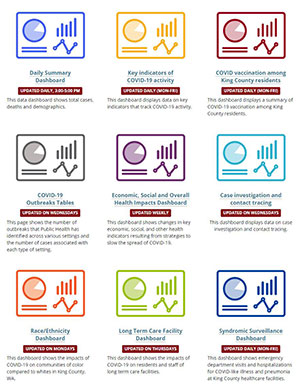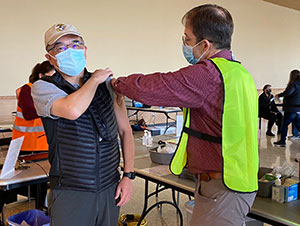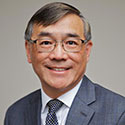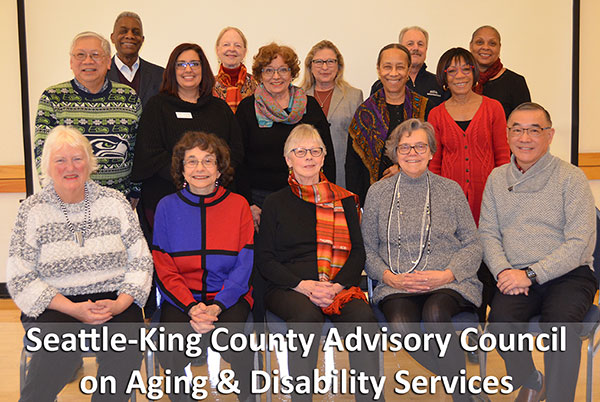Pandemic Response and Vaccine Access

At our February 12 meeting, the Seattle-King County Advisory Council on Aging & Disability Services had the opportunity to hear from and talk with John H. Vassall, MD. Dr. Vassall is the Physician Executive for Quality and Safety with Qualis Health, an organization focused on improving healthcare delivery and health outcomes for all. You can read about Dr. Vassall here.
Dr. Vassall’s topic was “Community Health: Reflections on Black History Month.” One year into a global pandemic that continues to disproportionally impact BIPOC communities, we invited Dr. Vassall to discuss the pandemic response, health literacy, and access issues for Black families.
His messages continue to resonate with me.
As a history buff, I appreciated that Dr. Vassall shared the origin of inoculation. We can thank Onesimus, an African slave in Boston in the 1700s. You can read about Onesimus on History.com, the History of Vaccines website, and many other online sources. You’ll read that the idea of exposing a person to a small amount of active virus in order to activate an immune response was not universally embraced, but it laid the groundwork for eradication of naturally occurring smallpox in 1977. On May 8, 1980, the 33rd World Health Assembly officially declared the world free of the disease.

Public Health—Seattle & King County provides data on a broad range of COVID pandemic measures at bit.ly/3adANgY.
COVID vaccines are different. Active virus is not injected into people. Dr. Vassall shared that a new technology called “mRNA” was developed over several years, so it was nearly ready when the COVID-19 pandemic occurred. Storage and deployment strategies were developed simultaneous to vaccine production. (I read “How COVID unlocked the power of RNA vaccines” (Nature 1/12/2021) and “The next act for messenger RNA could be bigger than covid vaccines” (MIT Technology Review, 2/5/2021) with great interest!
There are several COVID vaccines, each approximately 95 percent effective in preventing severe disease and hospitalization, and virtually 100 percent effective in preventing people from dying from the virus. Serious side effects are extremely rare (only about 100 out of 42 million people already vaccinated have experienced serious side effects).
Hesitancy is widespread and not unique to the Black community. Some of the reasons have to do with confusion over the rollout. Certainly, we received mixed messages about COVID, vaccines, and the effectiveness of facemasks from the federal government in 2020. Our new administration is playing catchup, but their positive safety messages have already helped.
Some people have had bad experiences with health care that have influenced their decision about getting the vaccine. It’s so important to find a health care provider that you can trust.
We know that most people want to live! Most people don’t want to get sick. No one can predict how they will handle the COVID-19 infection if they get it. Certainly, we’ve heard of older people who have survived COVID and we’ve heard about children who have died from COVID.
Vaccines can eliminate disease. The option to getting the vaccine is to get sick, and possibly die. Let’s not forget that.
Most people who are hesitant about the COVID vaccine are not anti-vax in general—they’re just waiting to see if friends and trusted advocates have any side effects or other bad experiences. So far, we’ve heard that it’s about the same as a flu shot. You can read about that in my article in the February issue.

Dick Woo was fortunate to get a COVID vaccine appointment in late February
It’s also important to take the vaccine to the people rather than asking people to chase down the vaccine. At the same meeting, I was so happy to hear from a representative from Public Health—Seattle & King County, who shared how they’ve partnered with local Emergency Medical Service providers to take vaccinations to adult family homes. A larger percentage of adult family home residents have now been vaccinated. The “mobile vax teams” will move on to serve residents of low-income housing soon—perhaps even by the time this issue of AgeWise goes out.
Many who want to receive the COVID vaccine are frustrated by the lack of appointments. Even so, many people have received one if not two doses of a COVID vaccine already. For data about COVID cases, testing, and vaccination rates in King County, visit the COVID data dashboards provided by Public Health—Seattle & King County. You will see that vaccine supply was quite limited until mid-February.
At the same meeting, we learned that the federal government will now send vaccine availability information two to three weeks in advance—much better than the week-by-week notifications that the agency previously received. As vaccine supply improves, vaccination sites will be opened to more people who are eligible.
Please continue to be patient, wear a mask, maintain six feet or more of physical distance from anyone outside your household, wash your hands, and carry on. We will get through this pandemic together!
 Contributor Dick Woo chairs the Seattle-King County Advisory Council on Aging & Disability Services. He welcomes input from readers via e-mail (advisorychair@agewisekingcounty.org) as well as applicants for open positions on the council. For more information, visit www.agingkingcounty.org/advisory-council.
Contributor Dick Woo chairs the Seattle-King County Advisory Council on Aging & Disability Services. He welcomes input from readers via e-mail (advisorychair@agewisekingcounty.org) as well as applicants for open positions on the council. For more information, visit www.agingkingcounty.org/advisory-council.
Mark Your Calendars
Following are some of the virtual events (online or phone meetings) that ADS Advisory Council members are interested in attending:
- Women’s History Month: Monday, March 1–Wednesday, March 31
- Close to Home—Nura Adam, Immigrant Women’s Community Center: Thursday, March 4 (10:30–11:30 a.m.), online and phone options. To log on at event time, visit bit.ly/AgeFriendlyLive.
- ADS Advisory Council Meeting: Friday, March 12 (12 noon). To receive a link to join the meeting, e-mail Sariga.Santhosh@seattle.gov.
- Civic Coffee Hour—Tanya Kim and Lan Pham, Seattle Human Services: Thursday, March 18 (10:30–11:30 a.m.), online and phone options. To log on at event time, visit bit.ly/AgeFriendlyLive.
- Mayor’s Council on African American Elders: Friday, March 19 (2:00–3:30 p.m.) online only. To receive a link to join the meeting, e-mail Karen.Winston@seattle.gov in advance.
For more local Aging Network events, click here.
![AgeWise King County [logo]](https://www.agewisekingcounty.org/wp-content/themes/agewisekingcounty/images/logo.png)
